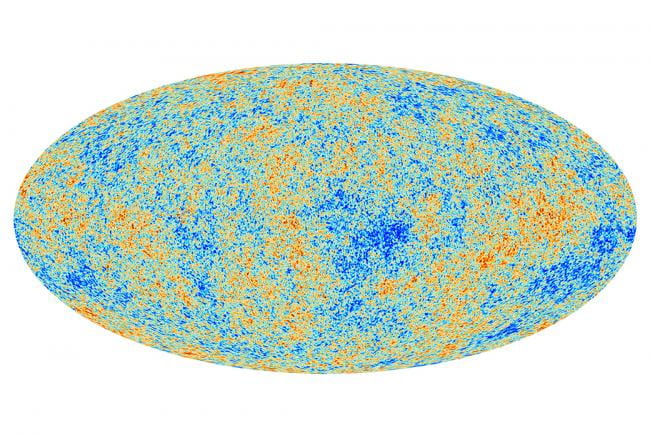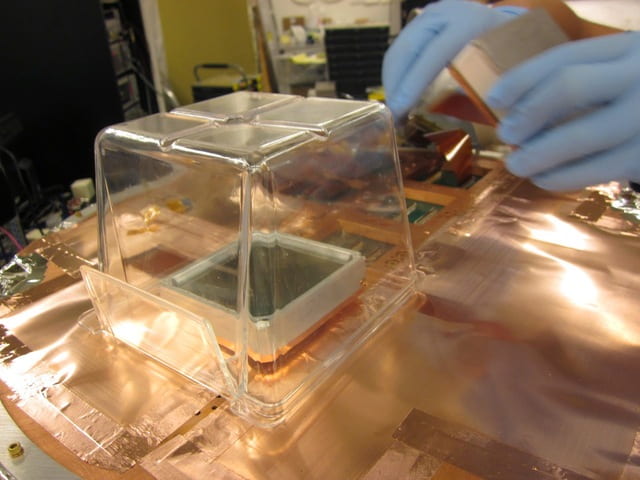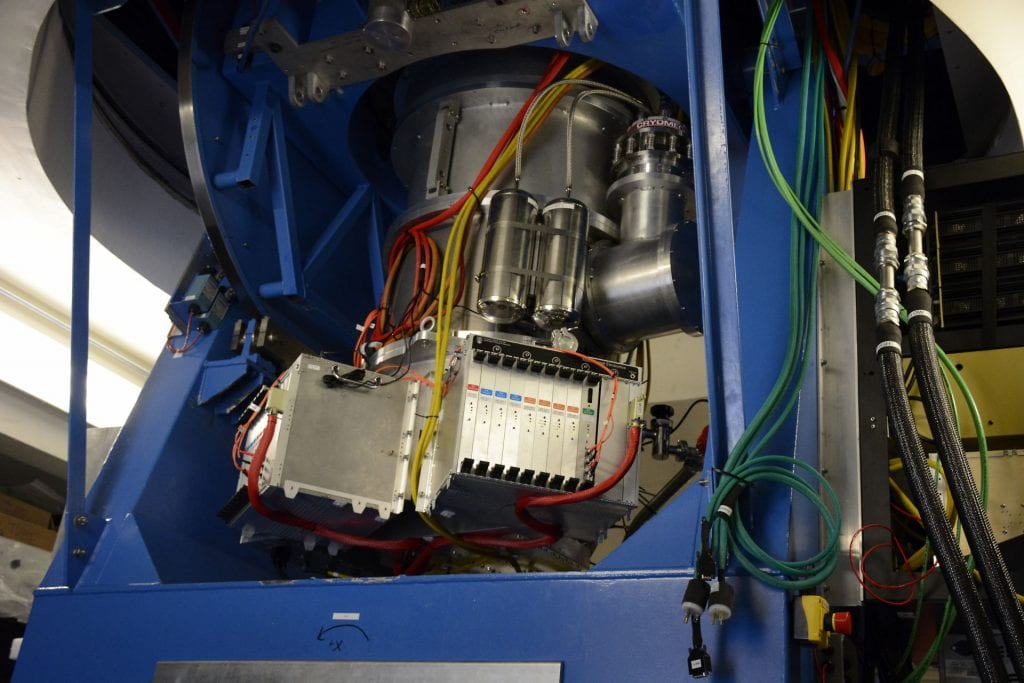Scientific Mission

In the earliest era of cosmic history, the universe was hot, dense and opaque. Around 400,000 years after the Big Bang, the first atoms formed in what is known as the epoch of recombination. This process resulted in the universe becoming transparent, allowing thermal radiation from this transitionary phase to propagate through space to reach our telescopes. The resulting signal appears as a nearly uniform background, which has been redshifted into the microwave part of the spectrum by the expansion of the universe. Fluctuations in matter density are imprinted on the CMB, providing us with detailed information about the early evolution of the universe.
More specifically, the CMB group is searching for evidence of cosmic inflation in the polarization of the CMB. The inflation paradigm posits a period of rapid expansion in the early universe (prior to recombination), which helps to explain several aspects of cosmic structure. Inflation is expected to leave an imprint from primordial gravitational waves in the CMB, through a unique pattern in the polarization known as “B-modes.” This pattern is very faint, requiring extended integration of sensitive observations, as well as multifrequency coverage to separate contributions from galactic dust and synchrotron radiation from the primordial signal.
Instruments

The Kovac lab is part of the BICEP/Keck and CMB-S4 collaborations, which develop telescopes for measuring the polarization of the CMB in order to achieve these science goals. These instruments are sited at the South Pole, where high altitude, low humidity and stable atmosphere provide an ideal environment for ground-based telescopes. Each individual receiver is a small-aperture refracting cryostat, with a unique bandpass chosen to match one of the atmospheric windows in the microwave spectrum.
Combining the responses from all receivers in the array creates a multi-frequency dataset. The telescope optics are composed of dielectric materials such as alumina or polyethylene, cooled to 4 Kelvin via a pulse tube cooler. The focal plane is filled with antenna-coupled Transition Edge Sensor (TES) bolometers, operated at 250 mK, that rely on the sharp change in resistance through the superconducting transition to be sensitive to small fluctuations in detector temperature. The detectors are read out by SQUID amplifiers, which provide low-noise gain as well as multiplexing for the large number of detectors in the focal plane (which would be prohibitive if read out individually). The instrumental design enables tight control of systematic effects, which are characterized with extensive calibration campaigns on-site.

Credit: Mike Lucibella

Credit: Peter Rejcek